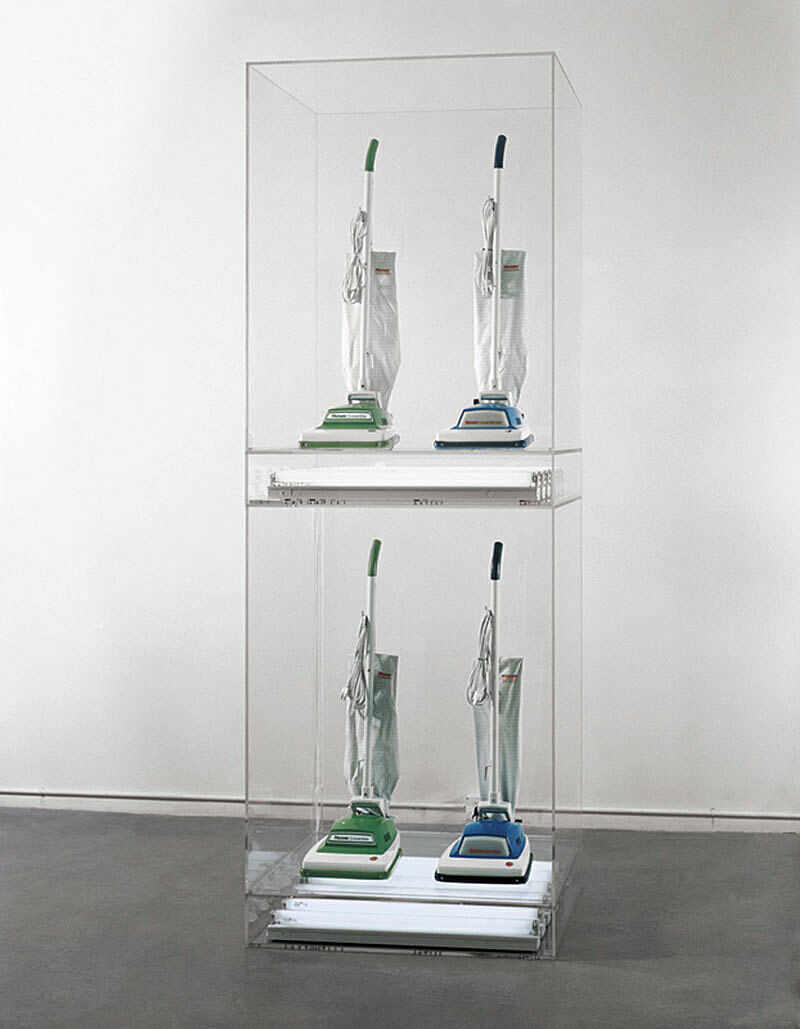Jeff Koons: A Retrospective | Art & Artists
June 27–Oct 19, 2014
Jeff Koons: A Retrospective | Art & Artists
The New
2
In 1980 Koons unveiled the earliest works from his breakout series The New in his first exhibition, held in the New Museum’s storefront window on Fourteenth Street. The display featured three illuminated wall reliefs affixed with vacuum cleaners as well as a lighted sign announcing the title of the series and the show. With these works and the freestanding encased examples that followed, Koons sought to capture the very essence of newness. Yet, almost paradoxically, the appliances in their antiseptic chambers have inevitably grown dated, suggesting that the eternal and inexorable quest for the “new and improved” in both art and commerce is inherently shadowed by the threat of obsolescence. The New also includes works that occupy the space of painting, in this case billboards that trumpet new products and toy with the distinction between art and advertising.
New Hoover Convertibles Green, Blue, New Hoover Convertibles, Green, Blue Doubledecker, 1981–87
Koons was drawn to vacuum cleaners in part because of their association with breathing and their intense psychological connections: “Vacuum cleaners to me were anthropomorphic. . . . They had this sexual reference, having orifices and a sucking power, and their shapes can be both masculine and feminine. It’s probably one of the most aggressive machines you come across if you are one year old and lying around on the floor when your mother is vacuum cleaning.” Koons sometimes emphasized these sexual associations by using wet/dry models and grouping the appliances in a “family unit” that encourages viewers to draw comparisons between the examples. In this work, he juxtaposed what he considered the feminine form of the round canister with the more masculine, even phallic, shape of the uprights. Bathed in cool and eerie light, they become strangely humanoid devices.

